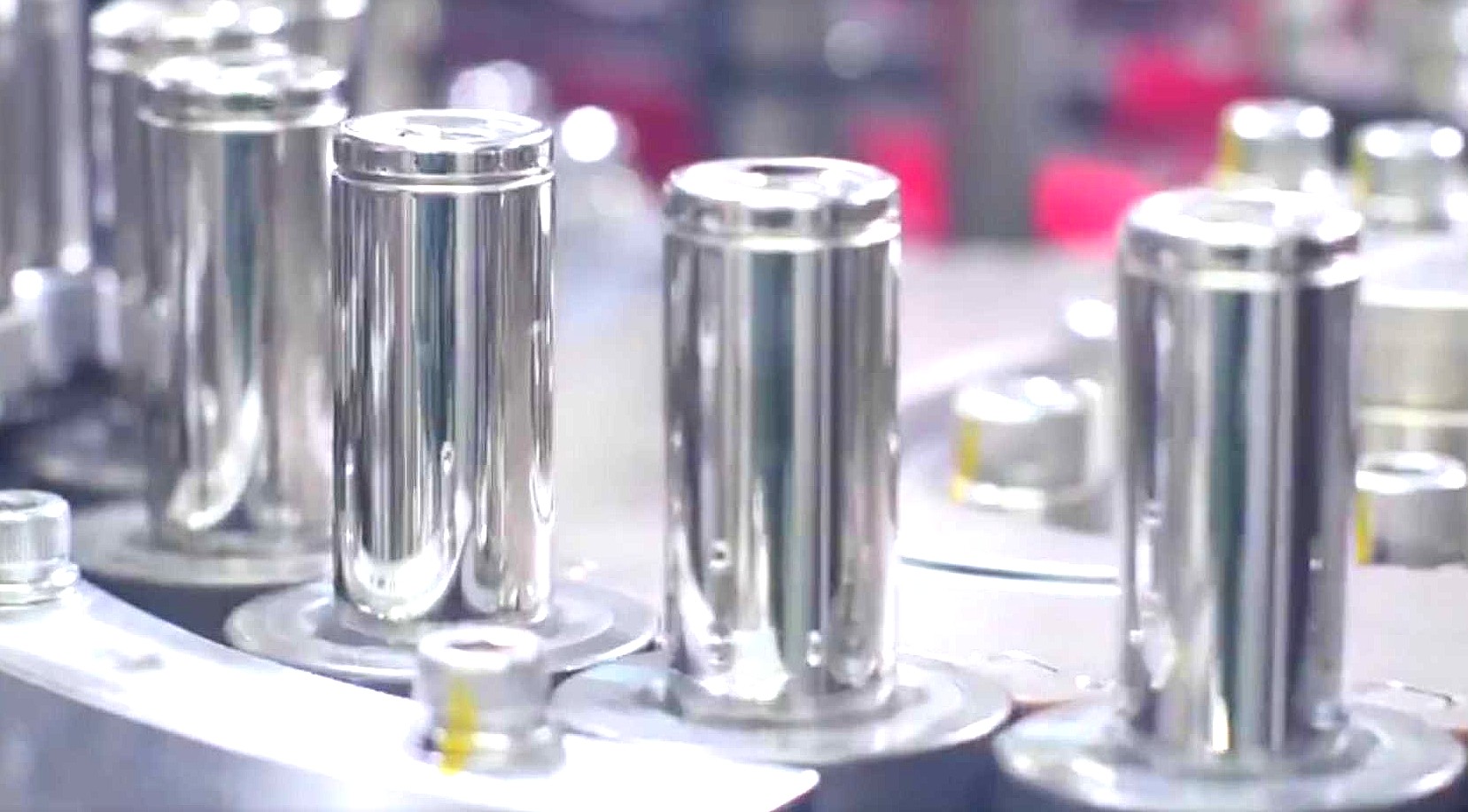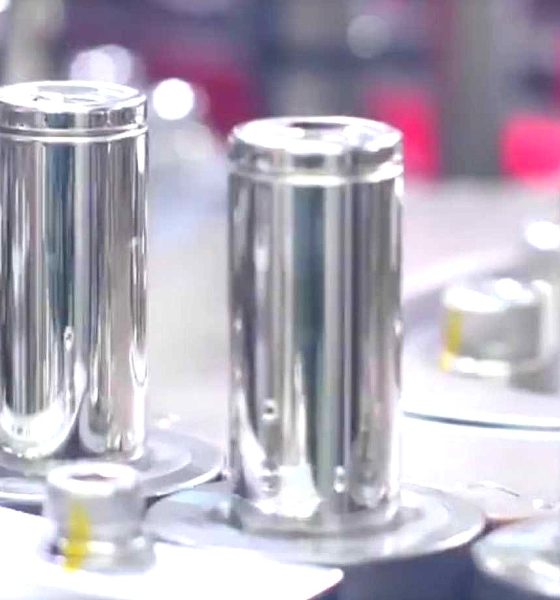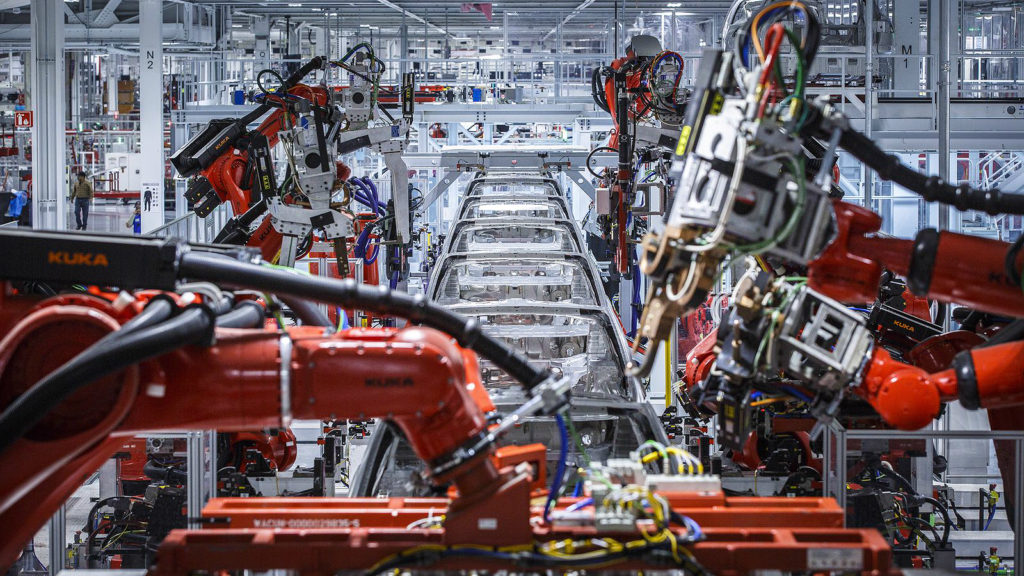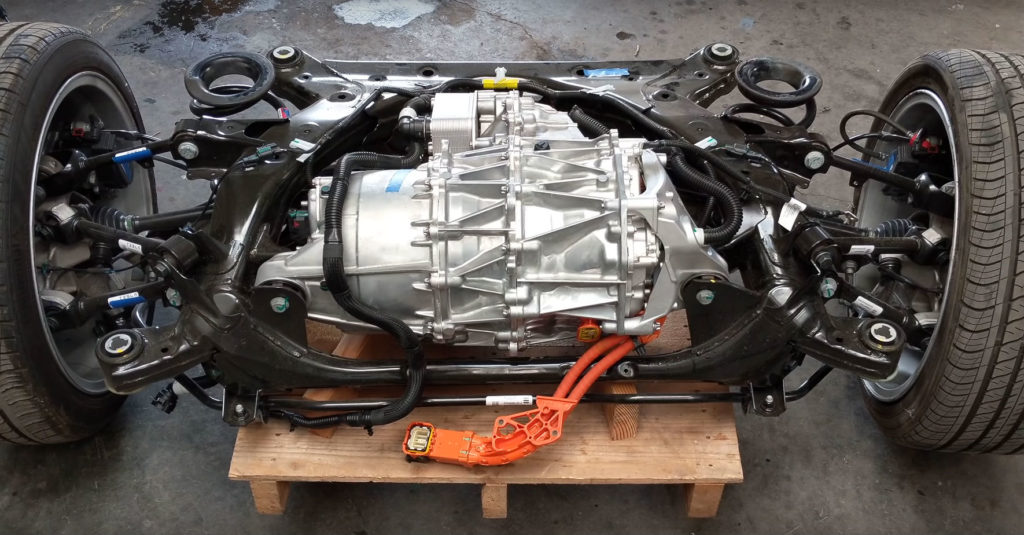

Investor's Corner
Auto experts reveal why Tesla’s batteries hold a comfortable lead in range
One of the reasons why the narrative of the “Tesla Killer” has effectively died is due to the pervading lead that Tesla holds over the competition in terms of range. Amidst the long-predicted entrance of competing vehicles from established automakers including Audi, Jaguar, and Porsche, Tesla’s vehicles have proven to be vastly superior in range, as evidenced by the Model S Long Range, which can last 370 miles in between charges.
Take Tesla’s very first car, the original Tesla Roadster. The vehicle featured Tesla’s efforts at creating a desirable all-electric sports car, and it showed in the Roadster’s robust 245-mile range. There weren’t even Superchargers when the Roadster was released, but the car proved that EVs could comfortably go beyond the 200-mile mark, and then some more. Interestingly, even modern EVs from veteran carmakers are finding it hard to match the Roadster’s 245-mile EPA range. The Audi e-tron, for example, just has 204 miles of range per charge, while the award-winning I-PACE has an EPA rating of 234 miles per charge.
This, according to veteran auto experts Sandy Munro and Mark Ellis of Munro & Associates, has a lot to do with Tesla’s all-electric platform and the company’s proprietary battery tech. Tesla is only 16 years old, and thus, it only has a fraction of the experience that its rivals in the auto market has. Yet in the EV segment, Tesla is among the veterans, having worked solely on electric cars since Day One.

All-Electric
As such, vehicles that Tesla releases such as the Model S, Model X, and Model 3, are designed as EVs from the get-go. In contrast, carmakers such as Mercedes-Benz and Audi opted to convert existing platforms for EV production. This reduces costs, but it is a double-edged strategy in the EV segment, which is starting to gain serious ground in several key markets. “If you’re designing something radically different, or if you want to have something that’s going to be a world-beater in the marketplace, that parts bin is the worst thing imaginable,” Munro said.
This could be seen in the difference between the Porsche Taycan and a vehicle such as the Mercedes-Benz EQC. Porsche opted to design the Taycan from a clean sheet, and the result was an all-electric sports car that can attack the track just as aggressively as the next 911. It even has a frunk like a Tesla, albeit smaller. Mercedes, on the other hand, opted to base the EQC on its existing GLC platform, and the result is an EV that still has echoes of its internal combustion roots. Between the two vehicles, it is easy to see which carmaker put more effort, and it shows. Today, it appears that the non-Tesla EV community is far more excited about the Taycan than they are for the EQC.
Mark Ellis, a senior master of lean design and battery consultant, notes that this is a key advantage that is inherent in Tesla. “One of Elon Musk’s big advantages is, basically, that the vehicle is designed to be an electric car. Musk designed every aspect of this car to be as efficient as possible,” he said.

The Secret Sauce
Apart from their all-electric design, Tesla’s secret sauce for its vehicles lies in their batteries, from the design of the pack to the chemistry of the cells themselves. Comparing the Model 3’s battery pack to those found in other EVs such as the Chevrolet Bolt EV, Nissan Leaf, Jaguar I-PACE, and BMW i3, Ellis stated that Tesla’s battery pack is superior, especially with regards to the placement of battery cells in relation to the current collectors. “It’s the best design of any battery pack I’ve seen so far,” he said.
But this is not all. Ellis added that Tesla’s cylindrical cells have inherent advantages compared to the prismatic or pouch cells used by the competition. Prismatic cells, for one, expand and contract as they charge and discharge, which means that manufacturers using them have to design their battery packs with the necessary parts to handle the expansion and contraction process of the cells. These add unnecessary weight to a battery, which Tesla’s packs don’t have to deal with.
Ultimately, Ellis explained that Tesla’s battery cells simply have a higher energy density than those utilized by its competition. Tesla was able to achieve this because its batteries have superior chemistry, the consultant said. Part of the reason behind this is the fact that Tesla as a company does not really stop innovating. Tesla’s Automotive President Jerome Guillen hinted at this in a previous interview, when he said that the company’s batteries are never frozen since they are always in a state of improvement. “We are improving the design of the cell. The design of the cell is not frozen. It evolves, and we have a nice roadmap of technology improvements for the coming years,” Guillen said.
Range is something that is one of the most important factors consumers consider when purchasing an electric car. With the number of EV charging stations not yet on par with the number of gas stations on the road, it is pertinent for customers for many car buyers to acquire a vehicle that can go the distance. Tesla’s long-range vehicles, together with the company’s Supercharger Network, are a perfect fit for these types of customers.

Investor's Corner
Tesla stock closes at all-time high on heels of Robotaxi progress

Tesla stock (NASDAQ: TSLA) closed at an all-time high on Tuesday, jumping over 3 percent during the day and finishing at $489.88.
The price beats the previous record close, which was $479.86.
Shares have had a crazy year, dipping more than 40 percent from the start of the year. The stock then started to recover once again around late April, when its price started to climb back up from the low $200 level.
This week, Tesla started to climb toward its highest levels ever, as it was revealed on Sunday that the company was testing driverless Robotaxis in Austin. The spike in value pushed the company’s valuation to $1.63 trillion.
Tesla Robotaxi goes driverless as Musk confirms Safety Monitor removal testing
It is the seventh-most valuable company on the market currently, trailing Nvidia, Apple, Alphabet (Google), Microsoft, Amazon, and Meta.
Shares closed up $14.57 today, up over 3 percent.
The stock has gone through a lot this year, as previously mentioned. Shares tumbled in Q1 due to CEO Elon Musk’s involvement with the Department of Government Efficiency (DOGE), which pulled his attention away from his companies and left a major overhang on their valuations.
However, things started to rebound halfway through the year, and as the government started to phase out the $7,500 tax credit, demand spiked as consumers tried to take advantage of it.
Q3 deliveries were the highest in company history, and Tesla responded to the loss of the tax credit with the launch of the Model 3 and Model Y Standard.
Additionally, analysts have announced high expectations this week for the company on Wall Street as Robotaxi continues to be the focus. With autonomy within Tesla’s sights, things are moving in the direction of Robotaxi being a major catalyst for growth on the Street in the coming year.
Elon Musk
Tesla needs to come through on this one Robotaxi metric, analyst says
“We think the key focus from here will be how fast Tesla can scale driverless operations (including if Tesla’s approach to software/hardware allows it to scale significantly faster than competitors, as the company has argued), and on profitability.”

Tesla needs to come through on this one Robotaxi metric, Mark Delaney of Goldman Sachs says.
Tesla is in the process of rolling out its Robotaxi platform to areas outside of Austin and the California Bay Area. It has plans to launch in five additional cities, including Houston, Dallas, Miami, Las Vegas, and Phoenix.
However, the company’s expansion is not what the focus needs to be, according to Delaney. It’s the speed of deployment.
The analyst said:
“We think the key focus from here will be how fast Tesla can scale driverless operations (including if Tesla’s approach to software/hardware allows it to scale significantly faster than competitors, as the company has argued), and on profitability.”
Profitability will come as the Robotaxi fleet expands. Making that money will be dependent on when Tesla can initiate rides in more areas, giving more customers access to the program.
There are some additional things that the company needs to make happen ahead of the major Robotaxi expansion, one of those things is launching driverless rides in Austin, the first city in which it launched the program.
This week, Tesla started testing driverless Robotaxi rides in Austin, as two different Model Y units were spotted with no occupants, a huge step in the company’s plans for the ride-sharing platform.
Tesla Robotaxi goes driverless as Musk confirms Safety Monitor removal testing
CEO Elon Musk has been hoping to remove Safety Monitors from Robotaxis in Austin for several months, first mentioning the plan to have them out by the end of 2025 in September. He confirmed on Sunday that Tesla had officially removed vehicle occupants and started testing truly unsupervised rides.
Although Safety Monitors in Austin have been sitting in the passenger’s seat, they have still had the ability to override things in case of an emergency. After all, the ultimate goal was safety and avoiding any accidents or injuries.
Goldman Sachs reiterated its ‘Neutral’ rating and its $400 price target. Delaney said, “Tesla is making progress with its autonomous technology,” and recent developments make it evident that this is true.
Investor's Corner
Tesla gets bold Robotaxi prediction from Wall Street firm
Last week, Andrew Percoco took over Tesla analysis for Morgan Stanley from Adam Jonas, who covered the stock for years. Percoco seems to be less optimistic and bullish on Tesla shares, while still being fair and balanced in his analysis.

Tesla (NASDAQ: TSLA) received a bold Robotaxi prediction from Morgan Stanley, which anticipates a dramatic increase in the size of the company’s autonomous ride-hailing suite in the coming years.
Last week, Andrew Percoco took over Tesla analysis for Morgan Stanley from Adam Jonas, who covered the stock for years. Percoco seems to be less optimistic and bullish on Tesla shares, while still being fair and balanced in his analysis.
Percoco dug into the Robotaxi fleet and its expansion in the coming years in his latest note, released on Tuesday. The firm expects Tesla to increase the Robotaxi fleet size to 1,000 vehicles in 2026. However, that’s small-scale compared to what they expect from Tesla in a decade.
Tesla expands Robotaxi app access once again, this time on a global scale
By 2035, Morgan Stanley believes there will be one million Robotaxis on the road across multiple cities, a major jump and a considerable fleet size. We assume this means the fleet of vehicles Tesla will operate internally, and not including passenger-owned vehicles that could be added through software updates.
He also listed three specific catalysts that investors should pay attention to, as these will represent the company being on track to achieve its Robotaxi dreams:
- Opening Robotaxi to the public without a Safety Monitor. Timing is unclear, but it appears that Tesla is getting closer by the day.
- Improvement in safety metrics without the Safety Monitor. Tesla’s ability to improve its safety metrics as it scales miles driven without the Safety Monitor is imperative as it looks to scale in new states and cities in 2026.
- Cybercab start of production, targeted for April 2026. Tesla’s Cybercab is a purpose-built vehicle (no steering wheel or pedals, only two seats) that is expected to be produced through its state-of-the-art unboxed manufacturing process, offering further cost reductions and thus accelerating adoption over time.
Robotaxi stands to be one of Tesla’s most significant revenue contributors, especially as the company plans to continue expanding its ride-hailing service across the world in the coming years.
Its current deployment strategy is controlled and conservative to avoid any drastic and potentially program-ruining incidents.
So far, the program, which is active in Austin and the California Bay Area, has been widely successful.








